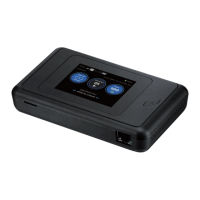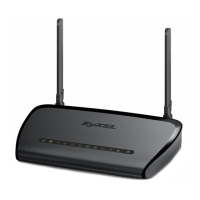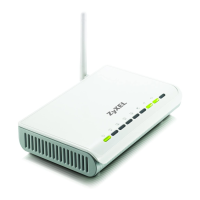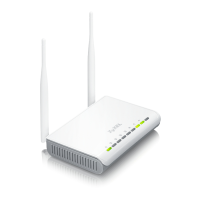Chapter 6 Connection Status
NR/FWA Indoor Series User’s Guide
91
MNC This shows the Mobile Network Code (MNC). MNC is a unique code that identifies a Public Land
Mobile Network (PLMN) in a country. MCC and MNC combined together are used to identify a
globally unique PLMN.
Service Information
Note: If the cellular service provider supports carrier aggregation (CA), then this section displays
statistics for the connection’s primary component carrier (PCC).
Access
Technology
This displays the type of the mobile network (such as LTE, UMTS, GSM) to which the Zyxel Device is
connecting.
Band This displays the current cellular band of your Zyxel Device (WCDMA2100).
RSSI This displays the strength of the cellular signal between an associated cellular station and the
Zyxel Device.
Cell ID This shows the cell ID, which is a unique number used to identify the Base Transceiver Station to
which the Zyxel Device is connecting.
The value depends on the type of the mobile network (such as LTE, UMTS, GSM) to which the
Zyxel Device is connecting:
• For UMTS, it is the Cell Identity as defined in SIB3 3GPP-TS.25.331, 3GPP-TS.24.008.
• For LTE/5G, it is the 28-bit binary number Cell Identity as specified in SIB1 in 3GPP-TS.36.331.
The value is ‘0’ (zero) or ‘N/A’ if there is no network connection.
Physical Cell ID This shows the Physical Cell ID (PCI), which are queries and replies between the Zyxel Device and
the mobile network it is connecting to. The normal range is 1 to 504.
UL Bandwidth
(MHz)
This shows the uplink cellular channel bandwidth from the Zyxel Device to the base station.
According to 3GPP specifications, the bandwidths defined by the standard are 1.4, 3, 5, 10, 15,
and 20 MHz. The wider the bandwidth the higher the throughput.
DL Bandwidth
(MHz)
This shows the downlink cellular channel bandwidth from the base station to the Zyxel Device.
According to 3GPP specifications, the bandwidths defined by the standard are 1.4, 3, 5, 10, 15,
and 20 MHz. The wider the bandwidth the higher the throughput.
RFCN This displays the Radio Frequency Channel Number of DL carrier frequency used by the mobile
network to which the Zyxel Device is connecting.
The value depends on the type of the mobile network (such as LTE, UMTS, GSM) to which the
Zyxel Device is connecting:
• For UMTS (3G), it is the UARFCN (UTRA Absolute Radio-Frequency Channel Number) as
specified in 3GPP-TS.25.101.
• For LTE/5G, it is the EARFCN (E-UTRA Absolute Radio-Frequency Channel Number) as
specified in 3GPP-TS.36.101.
The value is ‘0’ (zero) or ‘N/A’ if there is no network connection.
RSRP This displays the Reference Signal Receive Power (RSRP), which is the average received power
of all Resource Element (RE) that carry cell-specific Reference Signals (RS) within the specified
bandwidth.
The received RSRP level of the connected E-UTRA cell, in dBm, is as specified in 3GPP-TS.36.214.
The reporting range is specified in 3GPP-TS.36.133.
An undetectable signal is indicated by the lower limit, example –140 dBm.
This parameter is for LTE only. The normal range is –44 to –140. The signal is better when the value
is closer to -44. The value is –140 if the Current Access Technology is not LTE. The value is ‘N/A’ if
there is no network connection.
Table 15 Cellular Info: Detailed Information (continued)
LABEL DESCRIPTION
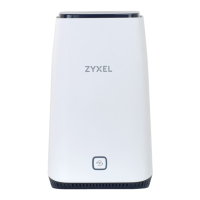
